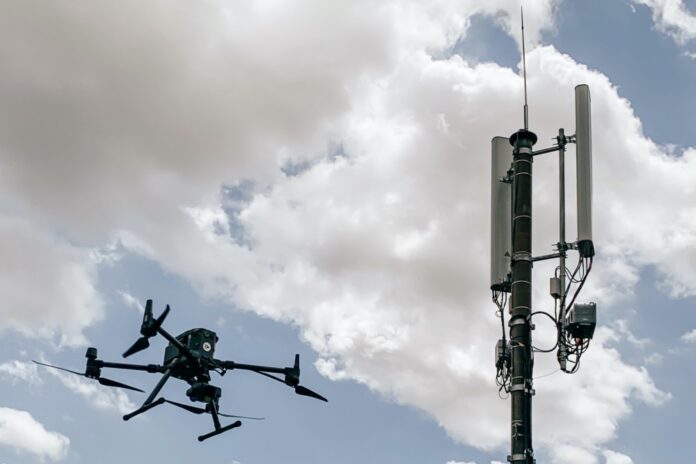Drones to plan journeys by mast
Drones are revving their blades and waiting for the all clear for take-off all over the Netherlands. The enabler been the sophisticated range of connectivity control afforded by 5G, according to Dutch telco KPN close, which is running through its final safety checks on its new commercial drone application. At Amsterdam Drone Week it unveiled rollout plans for Drone Connect, under which unmanned craft will take the sky guided by links to KPN’s 5G mobile network. Under a new systematic pecking order, drones can be given priority on the network so that wireless control, position determination, communication and data exchange are guaranteed. The weakest link in the supply chain to the service is user competence, since users must ensure they select the correct flight route via the route planner for an efficient and safe drone flight with the best mobile coverage.
Having shown this new service to the public at Drone Week, the global ecosystem will then meet for a number of days and watch, listen and discuss the future of unmanned aviation and the opportunities for commercial application, according to a KPN statement. “We can fly safely and controlled from A to B in the long term,” said Jacob Groote, who is responsible for innovation and partnerships at KPN. A total package of connectivity and priority on the network puts operators in control with instant data exchange between all the elements of navigation such as camera images and position determination. This means that insight into the ground and air risk are guaranteed, said Groote.
KPN said 5G’s more sophisticated range of connectivity gives the operator omnipotence over control, data exchange and position determination. Drone Connect also improves the security of each flight, because it can apportion bandwidth and prioritise certain traffic. It claimed a drone application used in critical industrial processes or for the emergency services can be ring fenced so the strength of its signal is never threatened.
KPN went into detail about its route planner for drones. Before a drone takes to the air, the levels of coverage along the route can be established. The flight path can take in areas where the signal is strongest. Drones may navigate their way across Holland by following broadcast masts. The Route Planner can report on and predict the quality of the network coverage on the drone’s expected flight route. This allows the flight to be prepared and adjusted according to the need for connectivity. This is a crucial quality that must be established before drone’s become viable since an unmanned craft cannot become uncontrollable even for a split second, especially since many will become BVLOS (beyond visual line of sight).
KPN said drones will be crucial for keeping industry viable in the tough years ahead. It already has specific plans for potato cultivation, delivery of packages to ships, transport of drugs, medicines and medical equipment or used at sea in support of expeditions to find missing people. Allowing Drones and manned aviation to fly safely through the airspace is also the goal of the cooperation that LVNL (Air Traffic Control Netherlands), ANWB and KPN have recently entered into with each other. For this, the ‘Drone Connect’ service is also used.
KPN said the lack of regulation is holding back the industry. Despite the fact that the number of drones and unmanned aerial vehicles is increasing significantly, there is still no organization and control of the airspace, it said in a release. “Legislation and regulation are crucial to make commercial drones possible,” said KPN in a statement.


